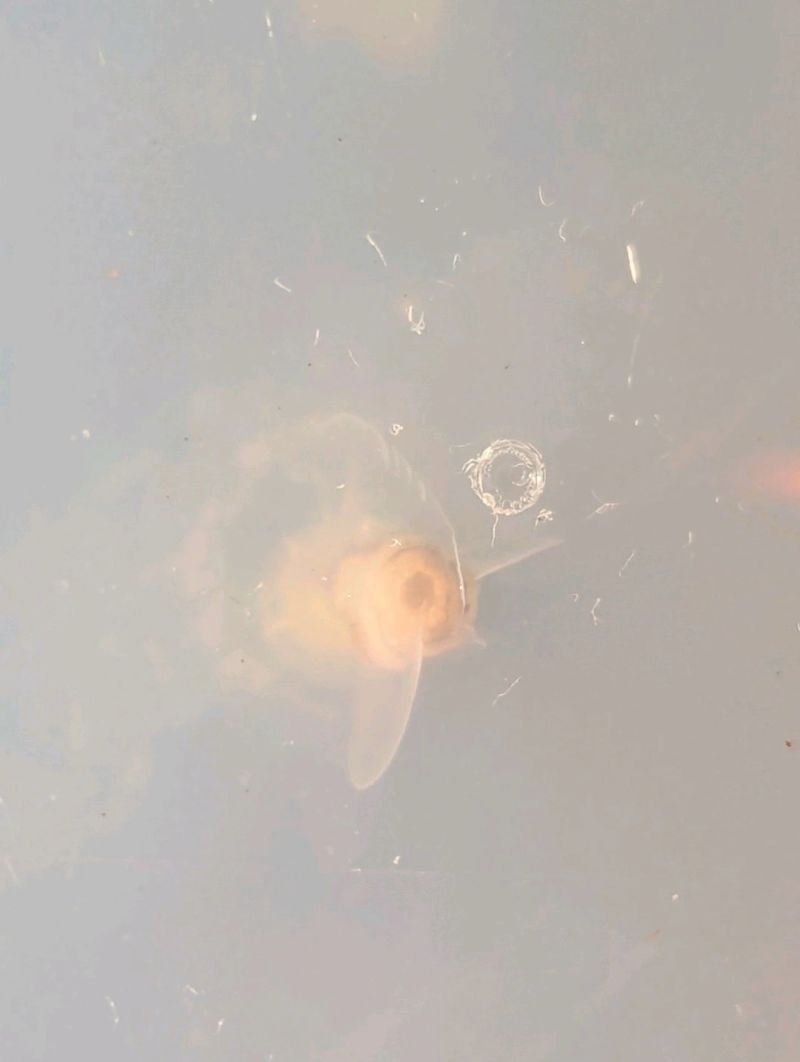Endogenous contamination in Tissue Culture
Endogenous contamination is a major challenge with doing cannabis tissue culture. This picture shows the contamination present in the agar gel originating from INSIDE of the plant from a nodal propagule. For your orientation, this is looking at the underside of a culture vessel and the bottom of the stem of the plant. This indicates that the plant has a vascular disease that has partially colonized the tissues of the plant inside the stem. No amount of surface sterilization can prevent this, which is why many people opt to avoid node segments that include stem all together.
This one presented itself about 2 weeks after initiation, but it can take MONTHS before endogenous contaminants show themselves. I've done ISO-IDs on these contaminants and sometimes they are harmless, such as Bacillus species that are often present in soil inoculants.
But beneficial microbes in the root zone or on the plant surface may be detrimental if they enter the vascular tissue of the plant through a wound. This is similar to humans, who have beneficial bacteria all over their bodies and in their gut, but if those same microbes enter a wound, you can get sepsis and die. Another analogy for what's probably going on in the stem is how plaque related to heart disease occurs in humans. Like our arteries, the stem has little pockets of contamination that have been isolated and covered up by the plants immune system...only to grow unimpeded when exposed to the high sugar and stress environment of tissue culture agar media.
To avoid this, many plant tissue culturists do meristem or shoot tip dissections, which have little to no stem to harbor these contaminants, and if they are present, they are much more easily identified. They also use anti-microbials (which usually aren't allowed in any phase of cannabis cultivation and I DONT recommend) such as PPM to 'eradicate' the contaminants, although I think that more times than not, you just further reduce your ability to identify the contamination.
Synganics Part II
This was one of the best conversations we have had on this program!
Syn-Ganics at Scale with Sergio Picazo and Kevin Crouch from PowrHouse, Inc. along with Jeremy Pfeiffer from Kairospace Technologies Inc. to discuss applied organics at commercial scale. Don't miss this one- I learned a lot and this is some cutting edge science for sure!
We talk a lot about commercial cannabis production and how using organic elements can increase quality significantly without compromising yields and efficiency.
Striking the Balance between Artistry and Efficiency
Efficiency vs Artistry
Quality vs Quantity
Craft vs Commercial
Whenever something of high quality is produced at a massive scale, it suffers in quality while usually becoming cheaper and more consistent. Which in some cases can create more "value" to the consumer, since the product is still good- but more cheaper and more widely available.
I often think of craft beer brands that have amazing products, then scale up for national production/distribution, and the resulting product is significantly worse. But hey, now you can buy it at the local store instead of waiting 2 hours at the brewery.
Striking this balance is one of the most important aspects of the maturing commercial cannabis business. Not just in terms of scale, but even in terms of HOW the plant is grown. During my Future Cannabis Project "Synganics" episode, we discussed how reduced yields of better product can be more profitable than high yields of average product. Many growers are realizing that "chasing yields" with grow practices that just make monster plants (at the expense of proper maturation and aroma development) isn't actually the best business practice.
One way growers can analyze this is with advanced metrics in their cultivation that dive deeper and reflect Resource Use Efficiency (RUE) such as Watts/Gram or Revenue/m2, or financial analysis such as ratio of OpEx+COGS/Revenue commonly referred to as Cost-to-Revenue Ratio. They might find that lower yields of higher value products actually consume less labor or resource inputs, resulting in higher profits. However, some companies have financial models or business strategies where they don't necessarily care how profitable they are, as long as they drive huge top line revenue, so that they can inflate the value of their business.
Profitability is so out of style these days 🤣
I encounter this phenomenon even in breeding new cannabis varieties. It is not often the most vigorous or highest yielding plant that has the best aroma and quality. And it certainly seems like the plant is somehow 'capped' on its ability to be fast-growing and high yielding, while also having top quality aroma and smoking experience. Its the one right in the middle- that is strong but also produces great aroma and quality, that I tend to select. Everything is about balance!
Check out the latest Future Cannabis Project Podcast featuring Jeremy Plumb from True Terpenes!
Voyager Genetics and Thai Stick Announce Genetics Development Agreement
4/1/2025
https://www.linkedin.com/feed/update/urn:li:activity:7279449009700716544/
https://www.thaistickinside.com/
We’re thrilled to announce our collaboration with Thai Stick Co., Ltd. , a premier medical cannabis cultivation company based near Bangkok, Thailand!
Together, we’ll focus on clone testing and development at the state-of-the-art Thai Stick facility, aiming to identify and introduce promising new cultivars to the market.
Driven by a shared passion for innovation, we’re excited to set sail on this journey to bring unique flavors to both domestic and international audiences.
A heartfelt thank you to the Thai Stick team for their unwavering dedication and professionalism. See you in 2025!



